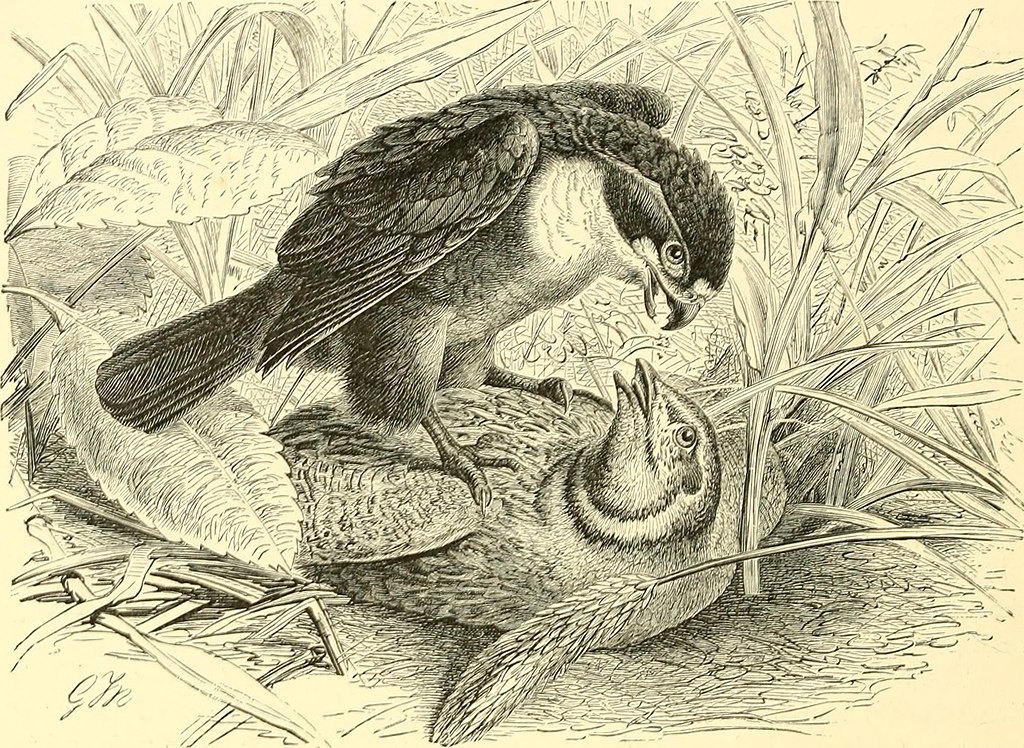The royal natural history (1893) (14781687101)
Identifier: royalnaturalhist47lyde (find matches)
Title: The royal natural history
Year: 1893 (1890s)
Authors: Lydekker, Richard, 1849-1915 Sclater, Philip Lutley, 1829-1913 Frostick, W. B., former owner. DSI Brooks, W. T., former owner. DSI
Subjects: Zoology Natural history
Publisher: London and New York : Frederick Warne & Co.
Contributing Library: Smithsonian Libraries
Digitizing Sponsor: Smithsonian Libraries
View Book Page: Book Viewer
About This Book: Catalog Entry
View All Images: All Images From Book
Click here to view book online to see this illustration in context in a browseable online version of this book.
Text Appearing Before Image:
om all the others by its white legs, and derives its name from its rufousthighs. All the falconets are cjuick and active in their movements, making theirway with a rapid and direct flight, during which the wings are constantly flapped.They are generally to be seen hawking insects with swallow-like speed, and whentired are said invariably to select a dead brancli upon wliich to rest. Tlieir chieffood appears to consist of dragon-flies, beetles, and l)utterflics; although they un-doubtedly at times attack and kill binls, wliicli may exceed themselves in size.Davison writes that he has seen a Ijlack - legged falconet swoop at a rock- 1 92 DIURNAL BIRDS OF PREY. thrush, and he onc«j sliot a male witli a living and pai-tially plucked swallow inits talons. All the species nest in hollow trees, inakinj^ at the bottom of the cavitya pad of the wings of dragon-flies and butterflies, upon which to lay their eggs.The latter are white; but the number in a clutch does not appear to be ascertained
Text Appearing After Image:
15Lack-legcji;d ialcu.vict and its prey (J nat. size). It is said that the Malays train the falconets for hawking, throwing them from theha)id at the ((uarry. Mississippi The three remaining genera of falcons are distinguished from the Falcon. foregoing by their oval nostiils being provided with an overhangingilaj) (jf skin. In this group the oval nostrils have the long axis parallel or obli((ueto the bill, whereas in the pigmy falcons it is at right angles to it. Of these genera,the one to which the Mississippi falcon belongs is characterised by the bill liavingbut one notch, and by the wings reaching to the tip of the tail; whereas in tlieoth(!r two (Baza and Harpagu-n) the beak has two notches, and the wing does notreach the end of the tail. The Mississippi falcon (Tctlnui, mi>islssl/>pienfiis) is oneof the two American species which ara the solo repi-(!scntatives of the genus, and a)-echaractei-ised by the leaden-black pluniage of tlu; uj)))()--));iits, ami the giey head,nec
Note About Images
Relevantní obrázky
Relevantní články
Sokolík zakrslýSokolík zakrslý je velmi malý druh sokolovitého ptáka, který se vyskytuje v jihovýchodní Asii. .. pokračovat ve čtení




